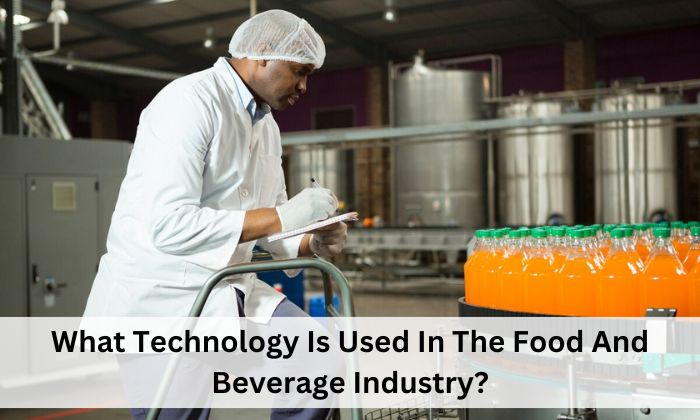Technology is transcending culinary ingenuity in a fast-changing food and beverage market. As demand for diversified and high-quality goods rises, the sector uses creative solutions to improve productivity and meet strict criteria. This article discusses five significant technological advancements affecting the food and beverage industry, from robots to expedited manufacturing and intelligent technologies to ensure food safety. Join us as automation, AI, and IT infrastructure transform food consumption.
| Technology | Description |
| Robotics | Enhances efficiency in food production and culinary tasks. |
| Automation | Streamlines in-house tasks and improves scheduling, and staffing. |
| Smart Technology | Ensures food safety, compliance, and supply chain transparency. |
| AI-Driven Forecasting | Predicts demand patterns, optimizes supply chain management efficiently. |
| Enhanced IT Infrastructure | Modernizes internal networks, enhances connectivity, and ensures data security. |
Beginning Of The Food Industry
Customer journeys are increasingly digital. Reimagining the customer experience in the digital era is crucial because it may lead to new growth levers and loyalty. From finding a location to dine out or order a meal to the expansion of on-demand food delivery and related services. This implies restaurateurs and food enterprises must consider all these 2024 technological developments and improvements in the consumer journey:
- Display a website or mobile app with complete information, appealing photographs, and features like reviews and booking possibilities;
- Online store offers home delivery or click-and-collect;
- Active social media presence (daily menu, happy hours, photos, conversations, games, current deals, etc.);
- Numerous booking, counter pick-up, and delivery choices.
5 Technologies Used In The Food And Beverage Industry
Robotics Transforming Food Production:
Rapid food production expansion in the food and beverage (F&B) sector has spurred the adoption of robotics to improve efficiency. With 67% of F&B CEOs predicting a 24% rise in gross throughput in 2022, more intelligent machines are needed. New sales and rising demand indicate a vital industry. Despite the expansion, efficiency remains an issue. Sixty-one percent of F&B executives want to increase production line flexibility, and 55 percent want to expand packaging lines and facilities.
Robotics addresses these issues and transforms them. Intelligent machines have revolutionized restaurant cooking as well as the industry. Robotic butchers execute delicate meat cuts in factories, freeing personnel for safer tasks. Robots cook and prepare meals in restaurants, decreasing labor and increasing production. This dynamic integration of robots improves productivity and worker safety.
Automation Streamlines Housework:
While the F&B industry’s visible components are generally highlighted, in-house job efficiency is vital to operations. Scheduling and personnel issues may rapidly overwhelm businesses, reducing service quality. Automation, especially industrial ERP systems, is the answer. Cloud-based technologies automate administrative and operational duties, simplifying everyday administration.
Some businesses automate further using online ordering. These solutions eliminate takeout and delivery third-party costs and provide extra capabilities. Marketing automation, client loyalty, and data analytics become essential to a holistic corporate strategy. Reduced human scheduling and sophisticated ordering systems let enterprises deploy resources more effectively, improving customer satisfaction.
Food Safety And Smart Technology:
Food and beverage companies must ensure food safety and regulatory compliance. The FDA and FSIS have strict criteria. While customer expectations change, 94% choose businesses with comprehensive supply chain transparency. Innovative technologies emerge to fulfill expectations and comply with rules.
Safe temperatures, inventory counts, and ingredient inspections depend on IoT sensors. These sensors give real-time data, enabling management to address safety issues quickly. Mobile applications and digital technologies make checklist development and sharing easier, easing compliance. Companies may monitor food safety audits and outcomes online for a complete and accessible compliance record.
Optimizing Operations Using AI Forecasting:
F&B demand and production are interconnected, making precise forecasting essential to effective operations. AI has changed forecasting, giving organizations strong capabilities to anticipate consumer behavior and enhance supply chain management. AI-powered software helps organizations estimate and manage demand and buy supply to avoid overruns and shortages.
AI-integrated inventory management solutions boost efficiency. These systems forecast ideal ordering times, lower food prices, and maintain product flow. F&B executives can minimize waste and maximize profits in a changing consumer market with AI-driven forecasting and inventory management.
Digital Transformation-enhanced IT Infrastructure:
The F&B business needs a better IT infrastructure as technology advances. Legacy systems and hardware might reduce productivity and ROI. Thus, organizations want to upgrade internal networks and increase IT capacity.
This upgrade includes powerful customer-facing and back-end Wi-Fi networks to connect smoothly. SD-WAN networks increase dependability and application control to meet data transmission efficiency demands. Cybersecurity software is essential to safeguard sensitive data. For a strategic switch from old to modern systems, engage an ERP selection specialist.
Conclusion
New digital solutions save time (bill payment for more significant table turnover and a pleasant customer experience) and enable the team to discuss or tailor ideas to raise the average basket and attract a bigger audience. Internet meal orders should be recognized for their loyalty and preferences when they visit the restaurant.
Use 2024 food industry technology developments to make significant gains and eventually affect the restaurant business. Contact us for food delivery or restaurant mobile app development. Our expertise can help you build robust applications with these new trends and technology.
